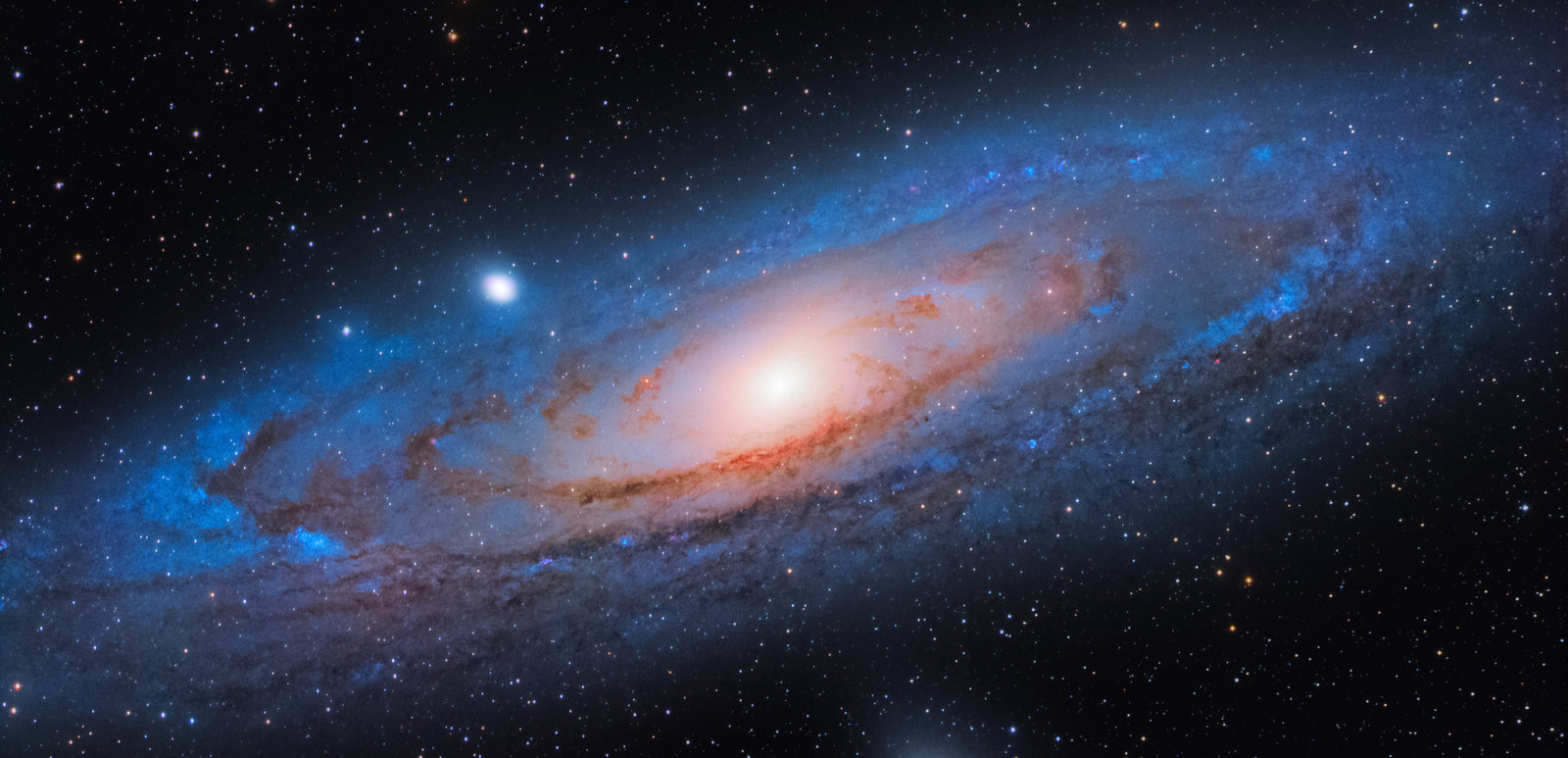Schmidt Cassegrain Telescopes, or SCTs for short, utilize folded optics to allow for long focal lengths in a compact telescope design. This makes them one of the most compact telescopes per aperture — much shorter than refractors or reflectors of a similar aperture. There are two primary manufacturers of Schmidt Cassegrain Telescopes: Celestron and Meade, which are both well-respected brands within the telescope industry. SCTs are known for their long native focal ratios, usually around f/10. You might think this makes them too slow to be used for anything other than planetary viewing or imaging, but read on to find out why this isn't the case!
SCTs are a great choice for beginners, namely because of the mount many entry-level SCTs come with. Although you won't see many SCTs under the $500 mark, you can find many under $1000, including the highly-regarded Celestron Nexstar SE series. These SCTs come standard with a computerized go-to mount that automatically point to objects at the push of a button. Because SCTs have such long focal lengths, using a go-to mount to automatically point at objects is basically essential. Without a good go-to mount, it becomes difficult to find objects in space because it can be like looking through a straw at such a long focal length. Thankfully, though, all SCTs that come with a mount have the go-to feature these days.
The benefits of Schmidt Cassegrain Telescopes don't stop at the beginner level — they can be excellent scopes for intermediate and advanced users as well. This is especially true for both planetary and deep sky astrophotography. For planetary, SCTs are the preferred choice of some of the world's best planetary imagers. This is largely in part to their affordability for a long focal length telescope with a small central obstruction. They also pair very well with Barlow lenses, which give the extra magnification required for planetary viewing and imaging. This allows you to get approximately an f/20 telescope with just a 2x Barlow, leading to great quality images of the planets, moon, and the sun (when paired with a proper solar filter).
For deep sky imaging, many astrophotographers opt for the Celestron EdgeHD series or the Meade ACF series. Both of these offer a wider image circle than the "standard" level of SCTs, meaning you can use a larger sensor camera on these telescopes. It's also important to note that most entry-level SCTs come with an alt-az mount, which don't lend well for deep sky imaging. If you're hoping to do deep sky imaging with an SCT, consider buying one that comes with an equatorial mount or buy the SCT telescope and equatorial mount separately.
One might think that SCTs are too slow to give good results for deep sky imaging. At their native f/10, it takes longer to gather the required light for faint deep sky objects. Fortunately, SCTs also pair very well with focal reducers. The most common focal reducers for SCTs reduce them down to an f/6.3 or f/7 focal ratio with a well-corrected field. However, some SCTs have a secret weapon up their sleeve. If your Celestron SCT is "Fastar compatible," this means you can take advantage of something called the Hyperstar system. The Hyperstar, an additional accessory made by Starizona, allows the focal ratio to be reduced down to a blazing fast f/2! This means your exposures can be 25x shorter than the exposure lengths required for the native f/10. For deep sky astrophotographers looking to do wide field imaging, the Hyperstar is a fantastic upgrade for compatible SCTs. The only drawback to the Hyperstar system is that it cannot be used visually.
When you combine all of the possible focal ratios for SCTs, you can have what many believe to be the most versatile type of telescope. You can use SCTs at f/20, f/10, f/7, or (imaging only) f/2 with the right accessories, making them a fantastic all-around telescope. No other telescope type can perform as well at such a wide variety of focal ratios. This, combined with their compact design make them wildly popular with observers and imagers of all skill levels.











